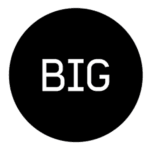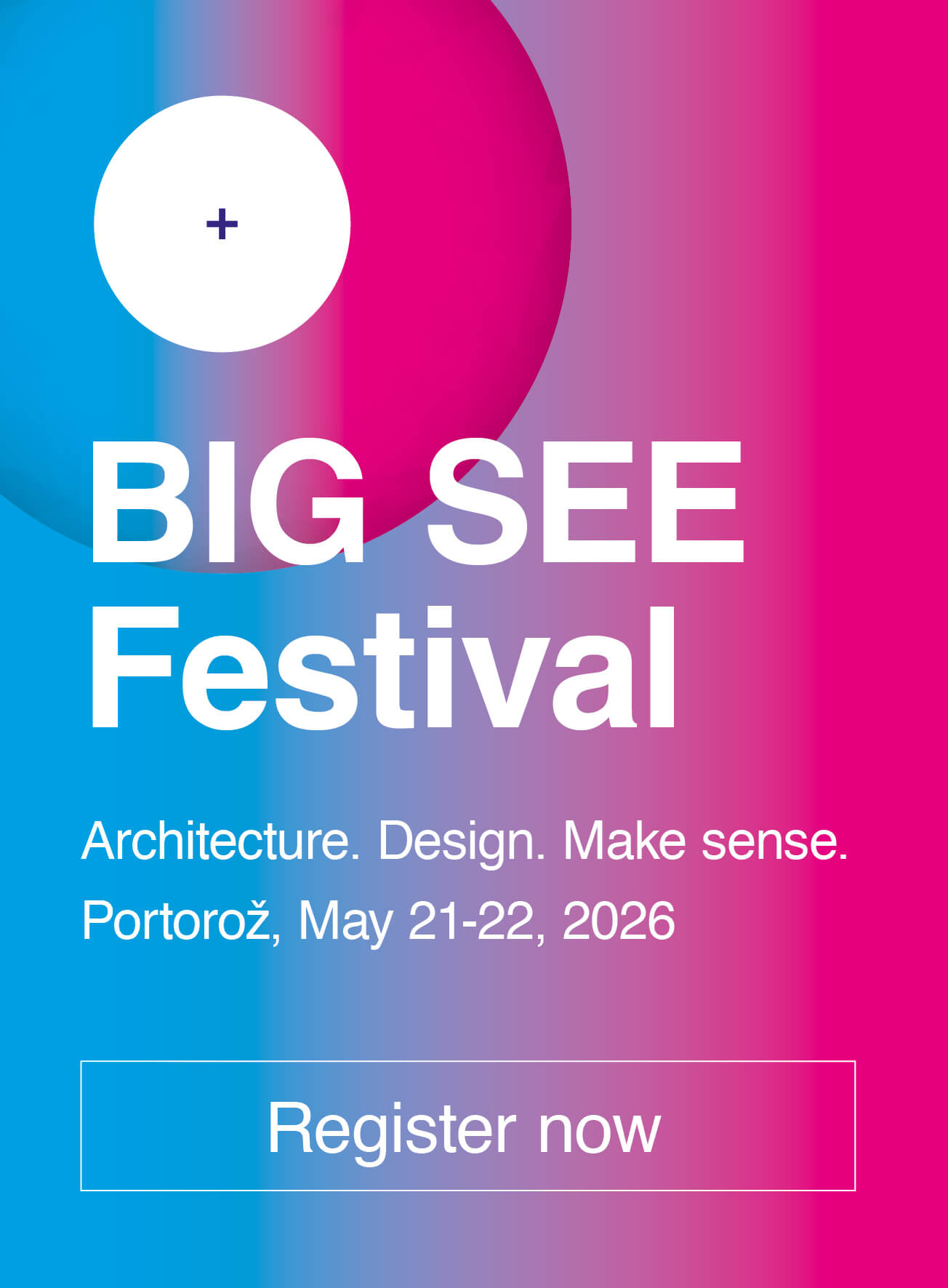BIG SEE Talks is a series of intimate, unfiltered conversations between architects – not just about buildings, but about how we think, live, and imagine our future environments.
In this edition, architect Jurij Ličen speaks with Alper Derinboğaz, founder of the architecture studio Salon, which operates between Istanbul and New York. The conversation touches on architecture’s relationship to time, geology, digital tools, and the role of intuition in creative practice.
Watch their insightful conversation or dive into the full transcript.
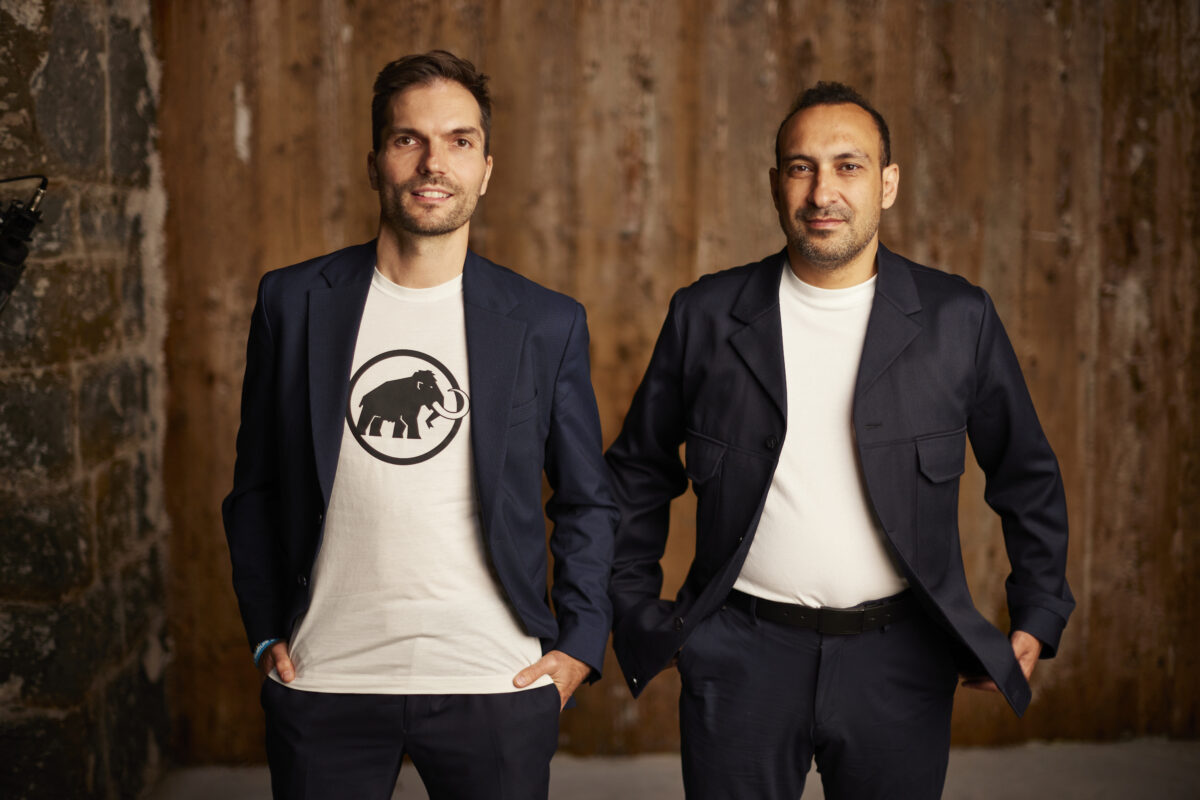
Jurij Ličen: We are joined by Alper Derinboğaz, who is the founder of the architecture office Salon, an internationally acclaimed office with offices based in Istanbul and New York. His work explores an interesting intersection between architecture, nature, geology, and technology, which he calls geo spaces. Beyond practice, he is also a prolific academic and educator with experience from UCLA and the Pratt Institute in the United States, where he contributes to research in computational design and digital fabrication. I’m curious about the origin of the name Salon for your architecture office.
Alper Derinboğaz: Like many things we do, the name carries two meanings. The first is a visible meaning, and in many languages, especially Turkish, it refers to the first public interface of your home – essentially the living room. But looking beyond that, in French history, it also refers to a place where revolutions begin through ideas, conversations, and exhibitions. We believe architecture should have motivations that extend beyond functional, practical uses. So perhaps the name reflects that.
Jurij Ličen: So in a sense, the name itself carries more weight than just being an architecture office – it also encodes a bit of a political agenda?
Alper Derinboğaz: Exactly. Architecture is such a large machine that moves many things and becomes part of society, often using significant resources. We can’t simply treat it as a functional artifact or object. The way we create buildings moves many pieces, so we always wanted to have an idea that goes beyond architectural value.
Jurij Ličen: Because you mentioned the French meaning of the word salon, where revolutions start through discussions in living rooms, do you think architects also have a revolutionary role? Should architects be the ones who bring out different, perhaps revolutionary, new, or controversial ideas?
Alper Derinboğaz: Definitely. We are trained to create new things, develop strategies, and make complex ideas happen. I see architecture as an incredibly vast resource in today’s society. Architects could be leading this transformation. I’m not saying we are, but there are many possibilities. Architects are particularly skilled at generating new ideas, strategies, and inspiring other practices and professions.
“Architecture is such a large machine that moves many things and becomes part of society, often using significant resources. /… / The way we create buildings moves many pieces, so we always wanted to have an idea that goes beyond architectural value.”
– Alper Derinboğaz
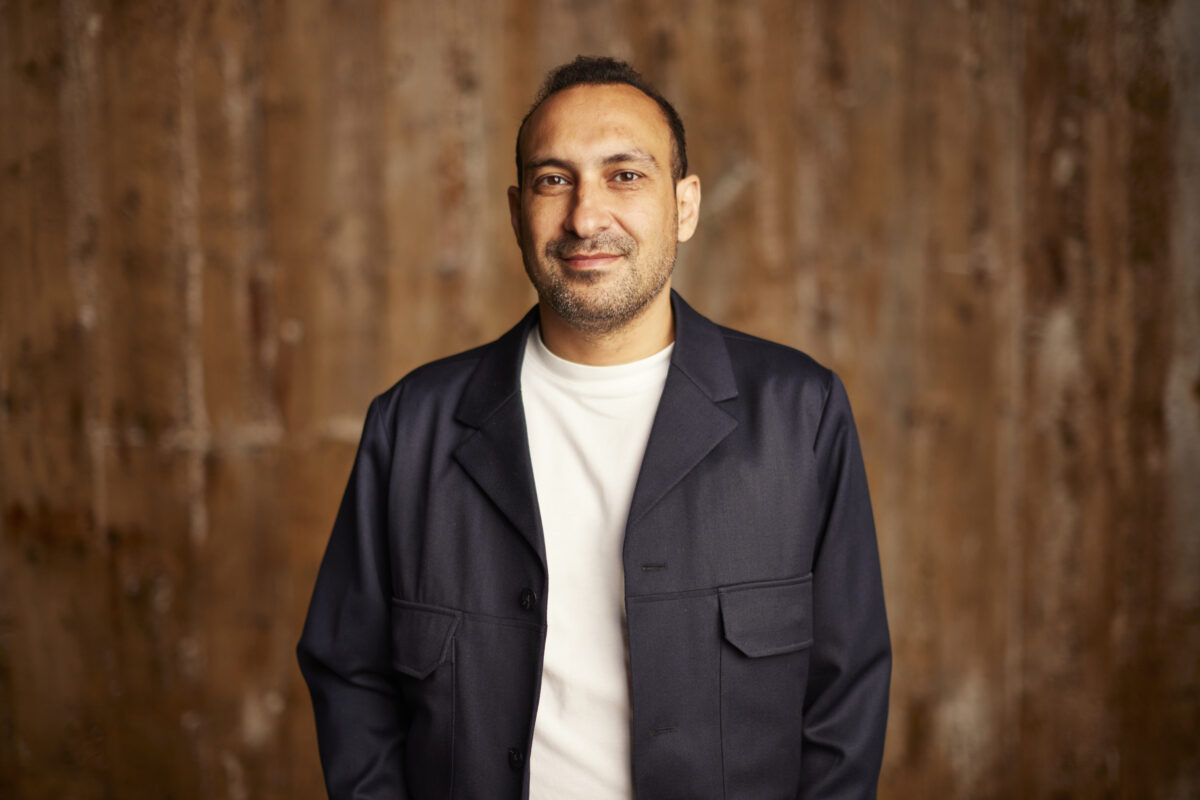
Jurij Ličen: Since you have a global practice working across different scales, countries, cultures, and environments, and you employ digital computational design technologies, algorithms, and digital fabrication – how do you balance these new tools with being contextual and embedded in a specific site? How do you respond to critical regionalism and avoid the homogeneity of global architecture?
Alper Derinboğaz: I think we are only seeing the first iteration of digital tools becoming part of architecture. The work of pioneers like Greg Lynn, Zaha Hadid, and Frank Gehry were extremely important, but these are just tiny experiments compared to what future generations might achieve. The greatest strength of digital architecture is its ability to be very specific. Beyond creating sculptural ideas, digital architecture allows us to integrate buildings into cities in a more nuanced way. Through these technologies, we can find continuities with nature. Currently, construction often involves clearing a site and importing materials from everywhere, which future generations might view as an incredibly inefficient approach. I don’t understand how architects can avoid technology. These tools are vastly underutilized, and they might be the only way to get things right. Through these techniques, we can relate to natural systems, existing resources, and environmental components much more wisely. I’m not saying we’re taking full advantage of these tools yet, but we’re still at an experimental stage.
Jurij Ličen: I think early digital experimentation, like with Greg Lynn and Zaha Hadid, was more about the excitement of creating geometries that were previously difficult to achieve. With digital fabrication and CNC machines, suddenly it became possible to fabricate complex computer-generated forms. Now, as Mario Carpo might say, we’re at the “third digital turn”, where it’s no longer about what we can make, but what we should use these tools for.
Alper Derinboğaz: Exactly. As architects, we might even choose not to do anything interesting, which can also be a strong position. We might not need a building. What we often underestimate in digital architecture is the ability to analyze the environment. Instead of simply placing an object on a surface, we can now understand what has existed underground for hundreds of years. We can investigate underground waterways, historical landscapes, and local biodiversity. I believe we’re not fully understanding the research capacity of this technology.
“As architects, we might even choose not to do anything interesting, which can also be a strong position. We might not need a building.”
– Alper Derinboğaz
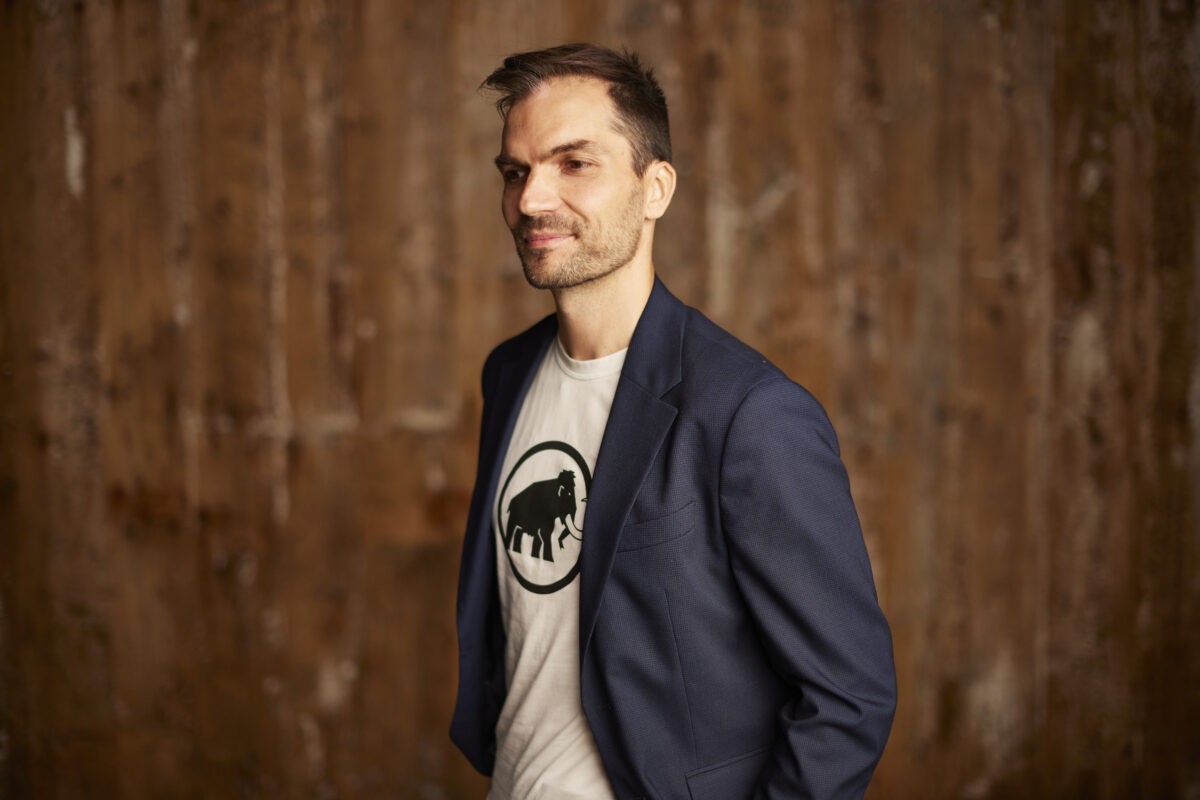
Jurij Ličen: You did some interesting studies, I think for the Venice Biennale, looking at the geology of different cities and how that geology determines building possibilities. One interesting example you gave was Manhattan, where the height and clustering of skyscrapers are directly dependent on the underlying geology – the bedrock and its depth.
Alper Derinboğaz: Exactly. New York is a striking example because it’s arguably the most man-made city in the world, yet it’s still fundamentally a translation of what exists underneath. The entire island is a continuation of a larger geological formation that was possibly adjacent to the Indian Plate many years ago. Understanding these details might allow future architects to work more intelligently with site conditions, potentially using technologies like 3D printing with earth or developing more sophisticated excavation and construction techniques. Today’s construction technologies are quite rigid, but I hope future technologies will bring more flexibility that helps us relate better to our surroundings and environment.
Jurij Ličen: Because you mentioned 3D printing as a digital fabrication tool, I think there was an interesting project you had in China, for the Learning Sky Library. Is that correct?
Alper Derinboğaz: It’s in Korea, in a new city called Songdo. The least popular New City. That’s the fate of new cities – they emerge over time. When you try to create a new city through a massive real estate project, it struggles for a long time.
Jurij Ličen: Before it’s really inhabited and appropriated by people?
Alper Derinboğaz: Yes, before it’s inhabited. I think it needs to fail because we project things we may not be capable of truly projecting, and those things have a hard time being realized.
Jurij Ličen: When you do things from a top-down approach, things often don’t happen as you would expect. In our office, we look at more naturally grown formations, like favelas or medieval cities with street patterns that emerged from necessity and organic logic, rather than planned design. Cities like Venice have beautiful, organic street patterns that we enjoy walking through, but we don’t know how to replicate that top-down approach anymore.
Alper Derinboğaz: Yes, as a practice, Salon is very interested in finding bases beyond human understanding using digital agencies. We try to augment our understanding or formal interpretations of what happens in cities and nature. In the case of the Korea library, regarding 3D printing, I’m not sure how long it will take to transform the construction industry. But we were trying to create a new concept of a library. If you look at the new generation, they don’t read as much. Books are important, but there are equally important ways of consuming information. We thought that if a library is the epicenter of information, then physical knowledge-generating systems are crucial. We hoped that 3D printing and maker culture would become an important part of future libraries.
“The beauty of digital production is that multiple people can work on the same project simultaneously because they can predict what will collide or work. I believe this should be the future of construction.”
– Alper Derinboğaz
Jurij Ličen: Because in the Seoul Sky Library project, you would print parts of the walls in a way that would engage people during construction, making the building process itself an exciting, visible artifact, rather than something hidden behind barriers.
Alper Derinboğaz: Buildings and construction processes should become part of city life. Some construction projects take five, ten, or even more years, which might represent an entire experience for someone briefly living in the city. We could develop better approaches to plan construction so it happens in continuation with the cityscape.
Jurij Ličen: This relates to your approach of “geo spaces”, where the long construction process of a building mimics a geological process – something we don’t remember when it started, and which has its own logic. Was this intentional for the Istanbul Museum project, or did it emerge naturally?
Alper Derinboğaz: You always plan to finish as soon as possible, which never happens, especially with complex large-scale projects involving public decision-making. This is a 40,000 square meter museum, one of the largest in Istanbul, using complex construction technologies. It was not planned to take this long, but these things become part of the city, the practice, and society. Buildings take years to build, stay for many years, survive transformations, and potentially come back to life. Architectural time is an important tool to comprehend Earth’s existence. As humans, we struggle to understand how tiny our existence is compared to the Earth’s timeline. Through architectural time, we can relate to things beyond our lifetime. We must consider whether we need buildings that survive for generations or if we should develop more flexible approaches.
Jurij Ličen: Let’s talk about one of your first built works, the Augmented Structures facade project. You were trying to map street sounds onto a facade, transforming sounds into a three-dimensional sculpted space. I understand that the contractor was unwilling to build it, and you had to figure out how to do it yourselves. How did that story unfold?
Alper Derinboğaz: It’s a funny story about how you become a contractor. This was our first built project in 2011, collaborating with Refik Anadol. It was a very early time for digital fabrication at this scale, especially for a practice just out of school. We were experimenting with three or four different materials and complex tectonics in the same surface.
Jurij Ličen: This was around the early years of Rhino and Grasshopper?
Alper Derinboğaz: We were working on the manuscript before Grasshopper existed. We would design things and they would fail. We realized that codes don’t always work perfectly without problems. It was an exciting time in Istanbul, which was culturally booming. We saw the cityscape as a superficial representation that undermined the city’s qualities. The street we were building on was the most popular square, but beyond architectural formation, the acoustic formation truly signified the place. We wanted to capture its essence by doing acoustic analysis and translating sound recordings into three-dimensional architectural interpretations. With motivation and luck, we finally executed it in reality.
Jurij Ličen: So you needed a perfectly precise match between the digital model and the built structure to project the visual performance correctly?
Alper Derinboğaz: Exactly. Refik would typically scan the building and work on the project for three months to create a video technique. In this case, we had only two to three months for both construction and visual preparation. We were working in parallel, almost like a marriage. The beauty of digital production is that multiple people can work on the same project simultaneously because they can predict what will collide or work. I believe this should be the future of construction.
What I’ve found as a guiding principle is to follow intuition. Despite being an academician involved in academic writing and research, I believe most discussions remain very surface-level. Our intuitions can go much further. Following your curiosity is extremely important.
– Alper Derinboğaz
Jurij Ličen: As a closing question, given your global practice and experience working across different scales and cultures, what are the key characteristics that make a good architect or designer? What do you look for in collaborators?
Alper Derinboğaz: Perhaps as advice to the younger generation – though advice rarely works – what I’ve found as a guiding principle is to follow intuition. Despite being an academician involved in academic writing and research, I believe most discussions remain very surface-level. Our intuitions can go much further. Following your curiosity is extremely important. In the worst-case scenario, you’ll at least enjoy what you’re doing. If things don’t work out, you’ll learn something new and develop different ideas. If things do work, you might create something inventive and groundbreaking.
Jurij Ličen: I think curiosity is a key word here. I’ve heard from others that if you want to be successful as a designer or architect, you need to be curious first and foremost. If you’re passionate about something, you’ll find your way. Thank you very much for this conversation.
Alper Derinboğaz: Thank you. It was great meeting you. Amazing set of questions.
Video and portraits by
Primož Korošec
Powered by
BIG SEE Talks is a series of intimate, unfiltered conversations between architects - not just about buildings, but about how we think, live, and imagine our future environments.
In this edition, architect Jurij Ličen speaks with Alper Derinboğaz, founder of the architecture studio Salon, which operates between Istanbul and New York. The conversation touches on architecture’s relationship to time, geology, digital tools, and the role of intuition in creative practice.
Watch their insightful conversation or dive into the full transcript.

Jurij Ličen: We are joined by Alper Derinboğaz, who is the founder of the architecture office Salon, an internationally acclaimed office with offices based in Istanbul and New York. His work explores an interesting intersection between architecture, nature, geology, and technology, which he calls geo spaces. Beyond practice, he is also a prolific academic and educator with experience from UCLA and the Pratt Institute in the United States, where he contributes to research in computational design and digital fabrication. I'm curious about the origin of the name Salon for your architecture office.
Alper Derinboğaz: Like many things we do, the name carries two meanings. The first is a visible meaning, and in many languages, especially Turkish, it refers to the first public interface of your home - essentially the living room. But looking beyond that, in French history, it also refers to a place where revolutions begin through ideas, conversations, and exhibitions. We believe architecture should have motivations that extend beyond functional, practical uses. So perhaps the name reflects that.
Jurij Ličen: So in a sense, the name itself carries more weight than just being an architecture office - it also encodes a bit of a political agenda?
Alper Derinboğaz: Exactly. Architecture is such a large machine that moves many things and becomes part of society, often using significant resources. We can't simply treat it as a functional artifact or object. The way we create buildings moves many pieces, so we always wanted to have an idea that goes beyond architectural value.
Jurij Ličen: Because you mentioned the French meaning of the word salon, where revolutions start through discussions in living rooms, do you think architects also have a revolutionary role? Should architects be the ones who bring out different, perhaps revolutionary, new, or controversial ideas?
Alper Derinboğaz: Definitely. We are trained to create new things, develop strategies, and make complex ideas happen. I see architecture as an incredibly vast resource in today's society. Architects could be leading this transformation. I'm not saying we are, but there are many possibilities. Architects are particularly skilled at generating new ideas, strategies, and inspiring other practices and professions.
"Architecture is such a large machine that moves many things and becomes part of society, often using significant resources. /... / The way we create buildings moves many pieces, so we always wanted to have an idea that goes beyond architectural value."
- Alper Derinboğaz

Jurij Ličen: Since you have a global practice working across different scales, countries, cultures, and environments, and you employ digital computational design technologies, algorithms, and digital fabrication - how do you balance these new tools with being contextual and embedded in a specific site? How do you respond to critical regionalism and avoid the homogeneity of global architecture?
Alper Derinboğaz: I think we are only seeing the first iteration of digital tools becoming part of architecture. The work of pioneers like Greg Lynn, Zaha Hadid, and Frank Gehry were extremely important, but these are just tiny experiments compared to what future generations might achieve. The greatest strength of digital architecture is its ability to be very specific. Beyond creating sculptural ideas, digital architecture allows us to integrate buildings into cities in a more nuanced way. Through these technologies, we can find continuities with nature. Currently, construction often involves clearing a site and importing materials from everywhere, which future generations might view as an incredibly inefficient approach. I don't understand how architects can avoid technology. These tools are vastly underutilized, and they might be the only way to get things right. Through these techniques, we can relate to natural systems, existing resources, and environmental components much more wisely. I'm not saying we're taking full advantage of these tools yet, but we're still at an experimental stage.
Jurij Ličen: I think early digital experimentation, like with Greg Lynn and Zaha Hadid, was more about the excitement of creating geometries that were previously difficult to achieve. With digital fabrication and CNC machines, suddenly it became possible to fabricate complex computer-generated forms. Now, as Mario Carpo might say, we're at the "third digital turn", where it's no longer about what we can make, but what we should use these tools for.
Alper Derinboğaz: Exactly. As architects, we might even choose not to do anything interesting, which can also be a strong position. We might not need a building. What we often underestimate in digital architecture is the ability to analyze the environment. Instead of simply placing an object on a surface, we can now understand what has existed underground for hundreds of years. We can investigate underground waterways, historical landscapes, and local biodiversity. I believe we're not fully understanding the research capacity of this technology.
"As architects, we might even choose not to do anything interesting, which can also be a strong position. We might not need a building."
- Alper Derinboğaz

Jurij Ličen: You did some interesting studies, I think for the Venice Biennale, looking at the geology of different cities and how that geology determines building possibilities. One interesting example you gave was Manhattan, where the height and clustering of skyscrapers are directly dependent on the underlying geology - the bedrock and its depth.
Alper Derinboğaz: Exactly. New York is a striking example because it's arguably the most man-made city in the world, yet it's still fundamentally a translation of what exists underneath. The entire island is a continuation of a larger geological formation that was possibly adjacent to the Indian Plate many years ago. Understanding these details might allow future architects to work more intelligently with site conditions, potentially using technologies like 3D printing with earth or developing more sophisticated excavation and construction techniques. Today's construction technologies are quite rigid, but I hope future technologies will bring more flexibility that helps us relate better to our surroundings and environment.
Jurij Ličen: Because you mentioned 3D printing as a digital fabrication tool, I think there was an interesting project you had in China, for the Learning Sky Library. Is that correct?
Alper Derinboğaz: It's in Korea, in a new city called Songdo. The least popular New City. That's the fate of new cities - they emerge over time. When you try to create a new city through a massive real estate project, it struggles for a long time.
Jurij Ličen: Before it's really inhabited and appropriated by people?
Alper Derinboğaz: Yes, before it's inhabited. I think it needs to fail because we project things we may not be capable of truly projecting, and those things have a hard time being realized.
Jurij Ličen: When you do things from a top-down approach, things often don't happen as you would expect. In our office, we look at more naturally grown formations, like favelas or medieval cities with street patterns that emerged from necessity and organic logic, rather than planned design. Cities like Venice have beautiful, organic street patterns that we enjoy walking through, but we don't know how to replicate that top-down approach anymore.
Alper Derinboğaz: Yes, as a practice, Salon is very interested in finding bases beyond human understanding using digital agencies. We try to augment our understanding or formal interpretations of what happens in cities and nature. In the case of the Korea library, regarding 3D printing, I'm not sure how long it will take to transform the construction industry. But we were trying to create a new concept of a library. If you look at the new generation, they don't read as much. Books are important, but there are equally important ways of consuming information. We thought that if a library is the epicenter of information, then physical knowledge-generating systems are crucial. We hoped that 3D printing and maker culture would become an important part of future libraries.
"The beauty of digital production is that multiple people can work on the same project simultaneously because they can predict what will collide or work. I believe this should be the future of construction."
- Alper Derinboğaz
Jurij Ličen: Because in the Seoul Sky Library project, you would print parts of the walls in a way that would engage people during construction, making the building process itself an exciting, visible artifact, rather than something hidden behind barriers.
Alper Derinboğaz: Buildings and construction processes should become part of city life. Some construction projects take five, ten, or even more years, which might represent an entire experience for someone briefly living in the city. We could develop better approaches to plan construction so it happens in continuation with the cityscape.
Jurij Ličen: This relates to your approach of "geo spaces", where the long construction process of a building mimics a geological process - something we don't remember when it started, and which has its own logic. Was this intentional for the Istanbul Museum project, or did it emerge naturally?
Alper Derinboğaz: You always plan to finish as soon as possible, which never happens, especially with complex large-scale projects involving public decision-making. This is a 40,000 square meter museum, one of the largest in Istanbul, using complex construction technologies. It was not planned to take this long, but these things become part of the city, the practice, and society. Buildings take years to build, stay for many years, survive transformations, and potentially come back to life. Architectural time is an important tool to comprehend Earth's existence. As humans, we struggle to understand how tiny our existence is compared to the Earth's timeline. Through architectural time, we can relate to things beyond our lifetime. We must consider whether we need buildings that survive for generations or if we should develop more flexible approaches.
Jurij Ličen: Let's talk about one of your first built works, the Augmented Structures facade project. You were trying to map street sounds onto a facade, transforming sounds into a three-dimensional sculpted space. I understand that the contractor was unwilling to build it, and you had to figure out how to do it yourselves. How did that story unfold?
Alper Derinboğaz: It's a funny story about how you become a contractor. This was our first built project in 2011, collaborating with Refik Anadol. It was a very early time for digital fabrication at this scale, especially for a practice just out of school. We were experimenting with three or four different materials and complex tectonics in the same surface.
Jurij Ličen: This was around the early years of Rhino and Grasshopper?
Alper Derinboğaz: We were working on the manuscript before Grasshopper existed. We would design things and they would fail. We realized that codes don't always work perfectly without problems. It was an exciting time in Istanbul, which was culturally booming. We saw the cityscape as a superficial representation that undermined the city's qualities. The street we were building on was the most popular square, but beyond architectural formation, the acoustic formation truly signified the place. We wanted to capture its essence by doing acoustic analysis and translating sound recordings into three-dimensional architectural interpretations. With motivation and luck, we finally executed it in reality.
Jurij Ličen: So you needed a perfectly precise match between the digital model and the built structure to project the visual performance correctly?
Alper Derinboğaz: Exactly. Refik would typically scan the building and work on the project for three months to create a video technique. In this case, we had only two to three months for both construction and visual preparation. We were working in parallel, almost like a marriage. The beauty of digital production is that multiple people can work on the same project simultaneously because they can predict what will collide or work. I believe this should be the future of construction.
What I've found as a guiding principle is to follow intuition. Despite being an academician involved in academic writing and research, I believe most discussions remain very surface-level. Our intuitions can go much further. Following your curiosity is extremely important.
- Alper Derinboğaz
Jurij Ličen: As a closing question, given your global practice and experience working across different scales and cultures, what are the key characteristics that make a good architect or designer? What do you look for in collaborators?
Alper Derinboğaz: Perhaps as advice to the younger generation - though advice rarely works - what I've found as a guiding principle is to follow intuition. Despite being an academician involved in academic writing and research, I believe most discussions remain very surface-level. Our intuitions can go much further. Following your curiosity is extremely important. In the worst-case scenario, you'll at least enjoy what you're doing. If things don't work out, you'll learn something new and develop different ideas. If things do work, you might create something inventive and groundbreaking.
Jurij Ličen: I think curiosity is a key word here. I've heard from others that if you want to be successful as a designer or architect, you need to be curious first and foremost. If you're passionate about something, you'll find your way. Thank you very much for this conversation.
Alper Derinboğaz: Thank you. It was great meeting you. Amazing set of questions.
Video and portraits by
Primož Korošec


